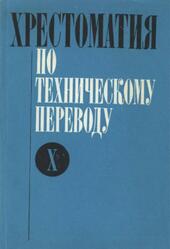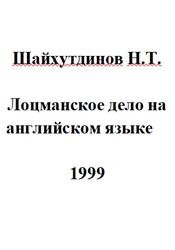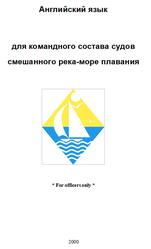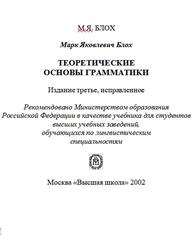Welcome! is an intermediate level course for people who need to use or who are preparing to use English in their day-to-day work in the tourism, hospitality and travel industries.
The core language skills are developed through a wide range of tasks which closely reflect the user’s world of work. Particular emphasis is placed on realistic and integrated communication tasks which give students the opportunity to build confidence and improve fluency.
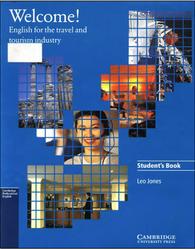
A brief history of Mexico.
Ancient Mexico was the home of three major cultures: the Olmecs from 1500 to 600 BC, the Mayans whose civilization was most developed in the 6th century AD, and tire Aztecs. The Aztecs founded a line modem city in 1325 at Tenochritlan: it had spring water and pyramids where human sacrifices were performed.
In 1519, the Spanish general Heman Cortes and 600 men landed at Veracruz and marched to Tenochtitlan. They made the Aztec emperor Moctezuma II a prisoner and took over the city. But the Indians fought back and drove the Spanish out. Two years later the Spanish defeated the Aztecs and destroyed the city. It was rebuilt as Mexico City, the capital of New Spain. Within ten years many of the Indians had been convened to Christianity, but they were treated very much as slaves by the Spanish.
Mexico was ruled by Spain until 1821 when it became independent. In 1847 the US army invaded Mexico and defeated the Mexican Army. The states of Calilomia, New Mexico, Arizona and Texas became part of the USA after this.
After a devastating civil war, Benito Juarez, a Zapotec Indian, became president in 1861 and he introduced many reforms. In 1863 Napoleon Ill’s French army entered Mexico City and the Austrian Maximilian became emperor of Mexico. A republican force under Porfirio Diaz eventually reconquered the country in 1867 and Juarez became president again. Diaz himself was president-dictator from 1877 to 1911.
СОДЕРЖАНИЕ.
Different kinds of people.
1. Wording in travel and tourism.
2. Being friendly and helpful.
3. When in Rome.
4. Dealing with enquiries.
International travel.
5. Different ways of travelling.
6. Asking questions.
7. Taking a booking.
8. The best way to get there.
9. Around the world 10 Organising a trip.
Phone calls.
11. Using the phone.
12. How may I help you?.
13. Answering enquiries.
14. Taking messages.
Food and drink.
15. Good morning!.
16. Explaining dishes.
17. May I take your order?.
18. Drinks, snacks and desserts.
19. Eating habits.
20. Welcome to our restaurant!.
Letters and faxes.
21. Responding to enquiries.
22. Confirming reservations.
23. Avoiding mistakes.
24. We are very sorry.
Accommodation.
25. Reservations.
26. Checking in.
27. Facilities: Enjoy your stay!.
28. Giving information.
29. The best hotel for you.
30. The perfect hotel.
Money.
31. How would you like to pay?.
32. Changing money.
33. Explaining the bill.
34. Is service included?.
Travelling around.
35. To and from the airport.
36. Local knowledge.
37. Offering and requesting.
38. Car rental.
39. Motoring.
40. The best way to get there.
Problems.
41. Is there anything I can do?.
42. Dealing with complaints.
43. Better safe than sorry.
44. Difficult customers?.
Attractions and activities.
45. Seeing the sights.
46. Making suggestions and giving advice.
47. Sun, sea and sand?.
48. History and folklore.
49. A nice day out.
50. The future of tourism.
Communication activities.
Бесплатно скачать электронную книгу в удобном формате, смотреть и читать:
Скачать книгу Welcome, English for the travel and tourism industr, Jones Leo, 2001 - fileskachat.com, быстрое и бесплатное скачивание.
Скачать djvu
Ниже можно купить эту книгу, если она есть в продаже, и похожие книги по лучшей цене со скидкой с доставкой по всей России.Купить книги
Скачать - djvu - Яндекс.Диск.
Дата публикации:
Хештеги: #учебник по английскому языку :: #английский язык :: #Jones Leo
Смотрите также учебники, книги и учебные материалы:
Следующие учебники и книги:
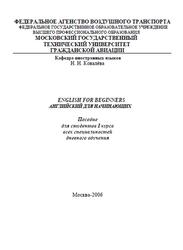 English for beginners, Английский для начинающих, Руслякова З.В., Ковалёва Н.Н., 2006 — Данное пособие издается в соответствии с учебным планом для студентов I курса всех специальностей дневного обучения. Рассмотрено и одобрено на … Книги по английскому языку
English for beginners, Английский для начинающих, Руслякова З.В., Ковалёва Н.Н., 2006 — Данное пособие издается в соответствии с учебным планом для студентов I курса всех специальностей дневного обучения. Рассмотрено и одобрено на … Книги по английскому языку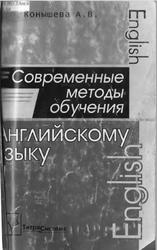 Современные методы обучения английскому языку, Конышева А.В., 2004 — В книге рассмотрена проблема метода обучения; анализируются основные методы обучения, используемые в современной методике; раскрываются возможности использования межпредметных связей при … Книги по английскому языку
Современные методы обучения английскому языку, Конышева А.В., 2004 — В книге рассмотрена проблема метода обучения; анализируются основные методы обучения, используемые в современной методике; раскрываются возможности использования межпредметных связей при … Книги по английскому языку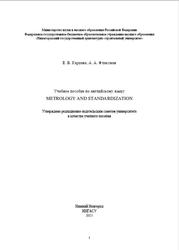 Учебное пособие по английскому языку, Metrology and Standardization, Карцева Е.В., Флаксман А.А., 2021 — Цель учебного пособия формирование базовых знаний по специальности, ознакомление с терминологией специальности, овладение профессионально-ориентированным языком, формирование профессиональной, коммуникативной и социокультурной … Книги по английскому языку
Учебное пособие по английскому языку, Metrology and Standardization, Карцева Е.В., Флаксман А.А., 2021 — Цель учебного пособия формирование базовых знаний по специальности, ознакомление с терминологией специальности, овладение профессионально-ориентированным языком, формирование профессиональной, коммуникативной и социокультурной … Книги по английскому языку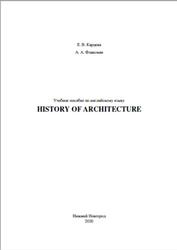 Учебное пособие по английскому языку, History of Architecture, Карцева Е.В., Флаксман А.А., 2020 — Цель учебного пособия формирование базовых знаний по специальности, ознакомление с терминологией специальности, овладение профессионально-ориентированным языком, формирование профессиональной, коммуникативной и социокультурной … Книги по английскому языку
Учебное пособие по английскому языку, History of Architecture, Карцева Е.В., Флаксман А.А., 2020 — Цель учебного пособия формирование базовых знаний по специальности, ознакомление с терминологией специальности, овладение профессионально-ориентированным языком, формирование профессиональной, коммуникативной и социокультурной … Книги по английскому языку
Предыдущие статьи:
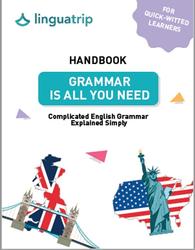 Hanbook, Grammar is all you need, Complicated english grammar explaine simply — Фрагмент из книги: What is it? A word that is used with a noun or its equivalent. Articles work similarly … Книги по английскому языку
Hanbook, Grammar is all you need, Complicated english grammar explaine simply — Фрагмент из книги: What is it? A word that is used with a noun or its equivalent. Articles work similarly … Книги по английскому языку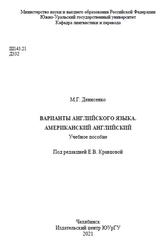 Варианты английского языка, Американский английский, Денисенко M.Г., 2021 — Данное учебное пособие предназначено для студентов-лингвистов и переводчиков, обучающихся по направлениям 45.03.02 Лингвистика , 45.04.02 Лингвистика , 45.05.01 Перевод и … Книги по английскому языку
Варианты английского языка, Американский английский, Денисенко M.Г., 2021 — Данное учебное пособие предназначено для студентов-лингвистов и переводчиков, обучающихся по направлениям 45.03.02 Лингвистика , 45.04.02 Лингвистика , 45.05.01 Перевод и … Книги по английскому языку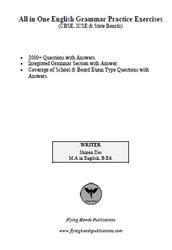 All in One English Grammar Practice Exercises, Shipan Das, 2021 — Фрагмент из книги: A friend need is a friend indeed. Friendship is one of the rarest gifts God. A good … Книги по английскому языку
All in One English Grammar Practice Exercises, Shipan Das, 2021 — Фрагмент из книги: A friend need is a friend indeed. Friendship is one of the rarest gifts God. A good … Книги по английскому языку English for history students, Voichici O.C., 2017 — English language, one of the most widely spoken languages, is essential in the world of today. It is an important … Книги по английскому языку
English for history students, Voichici O.C., 2017 — English language, one of the most widely spoken languages, is essential in the world of today. It is an important … Книги по английскому языку

